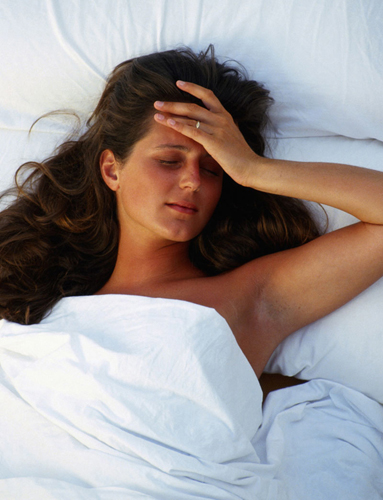| Q: |
I have started my migraine diet but I am getting bored with my food. How can I make my diet more interesting?
|
| A: |
Your treatment program will not be successful if you do not plan
for it. Unless you think ahead, plan your menus, and prepare a shopping
list, you will find yourself eating the same thing everyday. The
migraine diet is not that different from a healthy diet. However, it
does take away the convenience of packaged food and eating out all the
time. You may want to visit your local bookstore for cookbooks. You can
find new recipes to try. Some of the recipes may require some changes to
make them headache-friendly.
|
| Q: |
I find it difficult to say “no” to my family or friends when they offer me food that I need to avoid. What can I do?
|
| A: |
You must learn to say “no, thank you.” Many people express their
love by offering food. When you say no they feel rejected, so it is very
important to be nice. When someone offers you food, it is not the time
to go into a long drawn-out explanation about migraine and food
triggers. Simply say “no, thank you” with a gracious attitude. If you
find someone insisting that you eat a food that you know is a trigger,
then you may need to tell him or her politely that you must avoid
certain foods because of migraine.
|
| Q: |
I can stick with my program until I have a headache. How do I get back to my routine after a headache?
|
| A: |
You need to have a post-headache day plan. The day following a
migraine attack, you must adhere strictly to your migraine diet, reduce
the intensity of your exercise routine, and avoid trying to make up for
lost time. Review your daily responsibilities. Eliminate unnecessary
activities, defer chores to someone else if you can, and do only what
you can easily manage.
|
| Q: |
My day planner is full as it is, so how am I going to add migraine treatment to it?
|
| A: |
You need to decide that adding your migraine treatment to your
day planner is worth the effort. The fact is that either you add
migraine treatment to your planner or migraine will add a headache to
your day. You need to make time for a daily exercise program and daily
relaxation. Making time for shopping is essential to ensure you have
food for your special dietary needs. Once you have better control over
your migraine, you will have plenty of room on your planner, because you
will be able to use your time more efficiently.
|
| Q: |
How do I stick to my exercise and relaxation routine no matter what?
|
| A: |
First, you need to understand that it is impossible to maintain a
strict exercise and relaxation program all the time. You need to plan
for your daily exercise and relaxation, but there will be times when
life keeps you from your routine. When your routine is interrupted, make
every effort to get back on track as soon as possible. Depending upon
the circumstances, you may have to reduce the time for your program.
Once things are back to normal, you can dedicate yourself to your full
relaxation and exercise routine.
|
| Q: |
What can I do to make my plan succeed?
|
| A: |
Taking the time to write down your treatment plan will help you
succeed with your treatment program. A written plan will help you
remember to do your relaxation and exercise program. Reviewing your
treatment and menu plans will help you to assess your progress in
changing your lifestyle. You will be able to see your areas of success
and identify those that need a little extra work. In the beginning, set
realistic goals for yourself, then as time goes on you can make bigger
changes.
|
Myth or truth?
Myth
“No one understands or cares about my migraine”
Truth
Suffering from migraine
while the people around you are healthy and headache-free can seem very
lonely; however, you are not alone. In the last decade or so, there
have been dramatic advancements in the treatment and understanding of
this chronic illness. Those of us who have dedicated our lives to
helping people with migraine are passionate about making sure that
sufferers know that there is treatment for their disease. We want not
only to help alleviate the pain of the attack but also to eliminate the
stigma of the illness.
